 |
 |
 |
| |
COVID-19 bivalent booster effectiveness
in people with and without immune dysfunction
|
| |
| |
Bivalent COVID Booster Forestalls Breakthroughs and Severe Outcomes Despite Mild Compromised Immunity But Effectiveness Reduced in Moderate to Severe Immunocomprised
30th CROI, Conference on Retroviruses and Opportunistic Infections, February 19-22, 2023, Seattle
Mark Mascolini
In people who got two shots of an mRNA COVID vaccine, the bivalent booster protected against breakthrough infection and severe outcomes in people with and without compromised immunity [1]. This 2.4-million person US analysis charted mortality of 1.5 per 100,000 persons in people who got the bivalent booster versus 11.1 per 100,000 in those who got two mRNA shots but no bivalent booster-almost a 7.5-fold improvement.
Early data on the COVID bivalent booster indicated that it reduced emergency department visits, hospital admissions, and death. Because research has not yielded large analyses of real-world outcomes with the bivalent shot-especially in people with compromised immunity-researchers working with the US National COVID Cohort Collaborative (N3C) undertook this study.
The analysis focused on 45 N3C clinical sites that had data on COVID vaccinations including the bivalent booster. The database yielded 2,333,624 people who got two mRNA vaccines but not the bivalent booster by September 1, 2022, and 68,079 who got the bivalent booster between September 1, 2022 and December 15, 2022. The researchers defined breakthrough infection as a positive RT-PCR or antigen test or an ICD code at least 14 days after COVID vaccination. Related clinical outcomes were hospital admission, invasive ventilation, or death within 28 days of a breakthrough infection.
Study statisticians used multivariable logistic regression to compare odds of breakthrough infection and subsequent outcomes with versus without bivalent boosting in models adjusted for demographics, comorbidities, geographic region, prior SARS-CoV-2 infection, months since last shot of a nonbivalent vaccine, and number of previous doses of a nonbivalent booster.
The nonbivalent group (two mRNA vaccinations but no bivalent booster) and the bivalent group (two mRNA vaccinations plus the bivalent booster) were similar in median age (52 and 51), proportions of females (60% and 62%), non-Hispanic whites (63% and 66%), non-Hispanic blacks (10% and 11%), and Hispanics (12% and 14%). Similar proportions in the nonbivalent and bivalent groups had immune dysfunction (HIV, solid organ/ bone marrow transplant, autoimmune diseases, cancer) : 14% and 17%. And similar proportions had moderate to severe immune dysfunction:* 2.2% and 2.6%.
Breakthrough rates were 1.0% in the nonbivalent group (23,452 of 2,333,624) versus 0.44% in the bivalent group (298 of 68,079). In people without immune dysfunction, those who got the bivalent booster had about 70% lower odds of breakthrough infection than those who did not get the bivalent booster (adjusted odds ratio [aOR] 0.29, 95% confidence interval [CI] 0.26 to 0.34). In people with mild immune dysfunction, bivalent boosting also conferred about 70% lower odds of breakthrough infection (aOR 0.32, 95% CI 0.25 to 0.43).
Odds of hospital admission were 80% lower with than without bivalent boosting in people without immune dysfunction (aOR 0.21, 95% CI 0.13 to 0.35) and in those with mild immune dysfunction (aOR 0.20, 95% CI 0.09 to 0.41).
Bivalent boosting remained effective against breakthrough infection in people with moderate to severe immune dysfunction,* but the odds ratio was not as robust as it was in people with mild immune dysfunction (aOR 0.58, 95% CI 0.36 to 0.92). And bivalent boosting did not confer significantly lower odds of hospital admission in people with moderate to severe immune dysfunction (aOR 0.65, 95% CI 0.32 to 1.32).
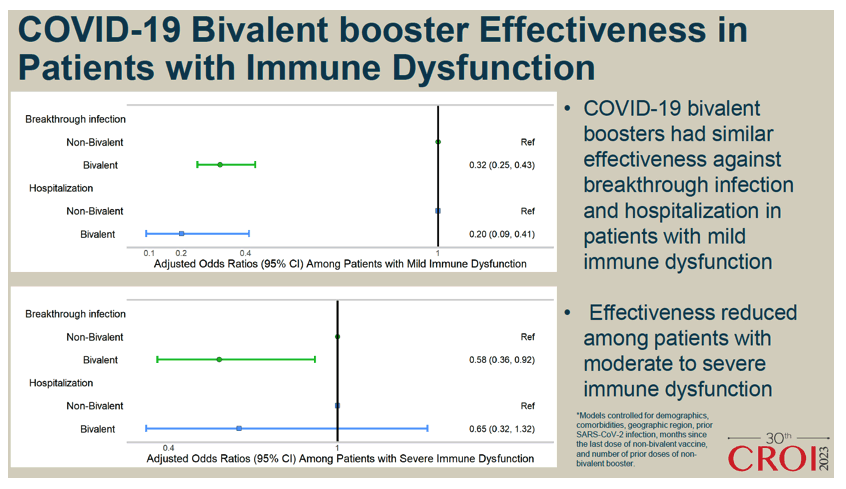
For the whole study group, incidence of COVID outcomes was lower with than without bivalent boosting for hospital admission (46 vs 151 per 100,000 persons), invasive ventilation (1.5 vs 7.5 per 100,000), and death (1.5 vs 11 per 100,000 persons).
Reference
1. Sun J, Zhang Y, Anzalone AJ, et al. COVID-19 bivalent booster effectiveness in people with and without immune dysfunction. 30th CROI, Conference on Retroviruses and Opportunistic Infections, February 19-22, 2023, Seattle. Abstract 214.
*Severe immune dysfunction includes a history of leukemia or lymphoma, solid organ or bone marrow transplant, HIV infection and a CD4 count below 350 or viral load above 50 copies, rheumatologic disease, and active immunosuppressive therapy.
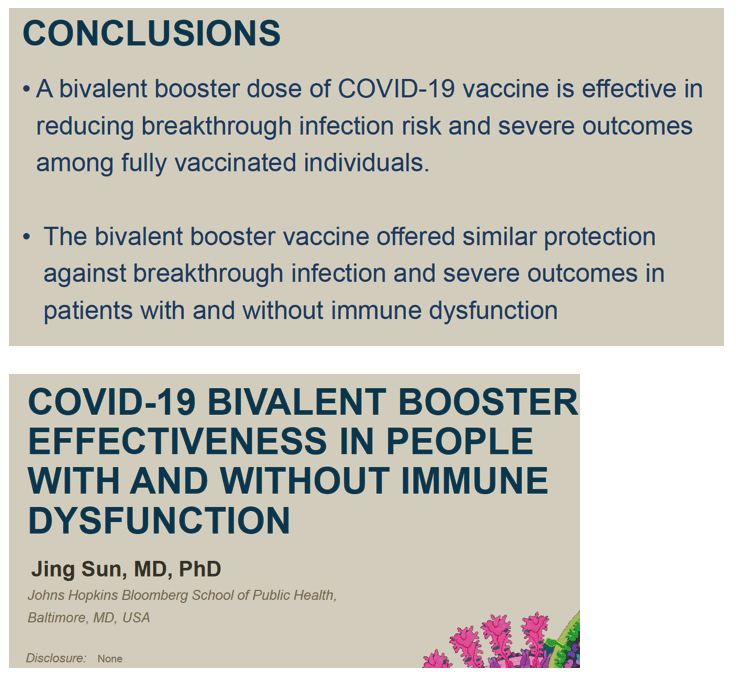
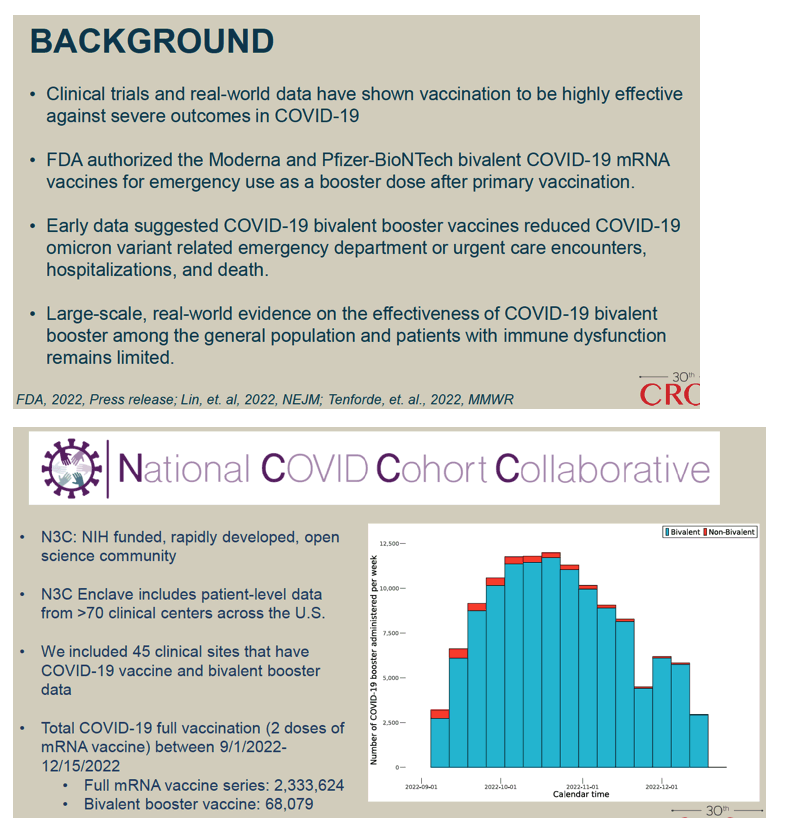
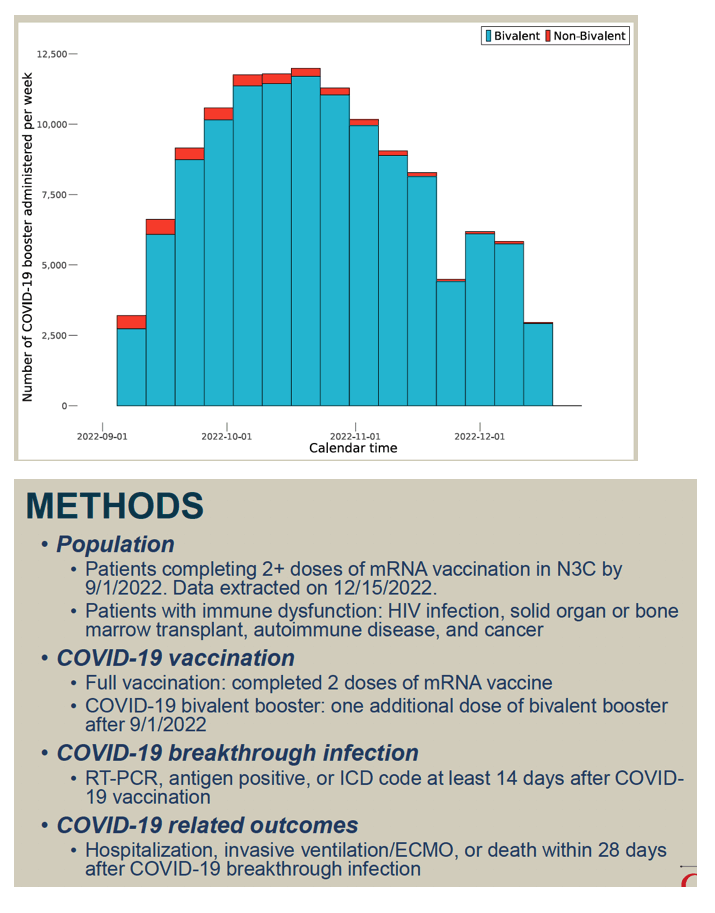
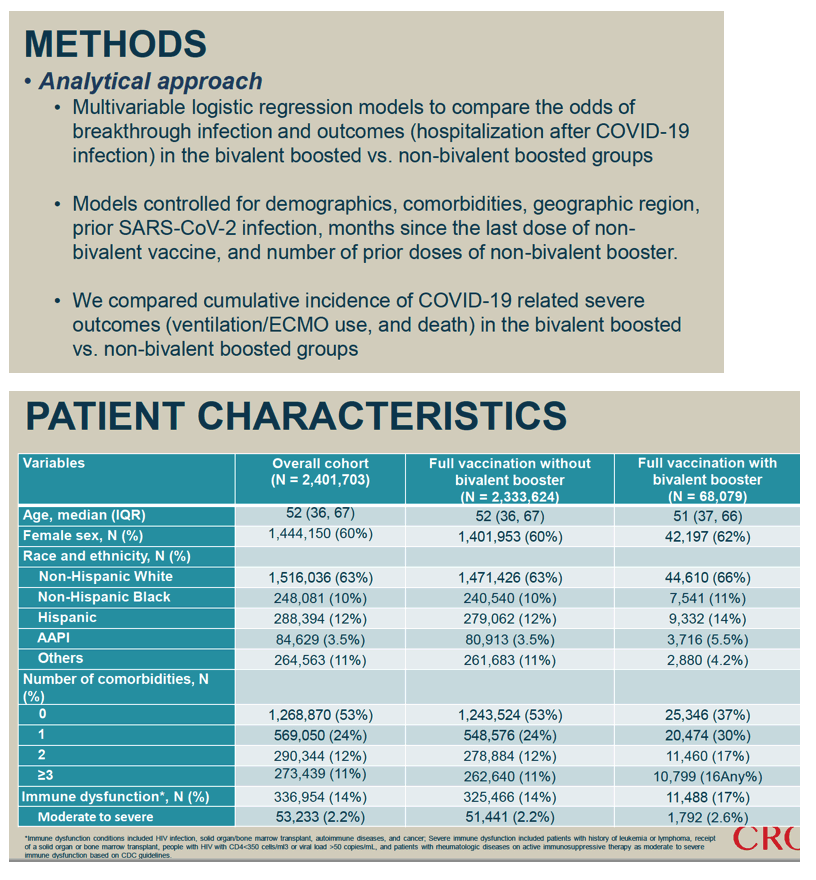
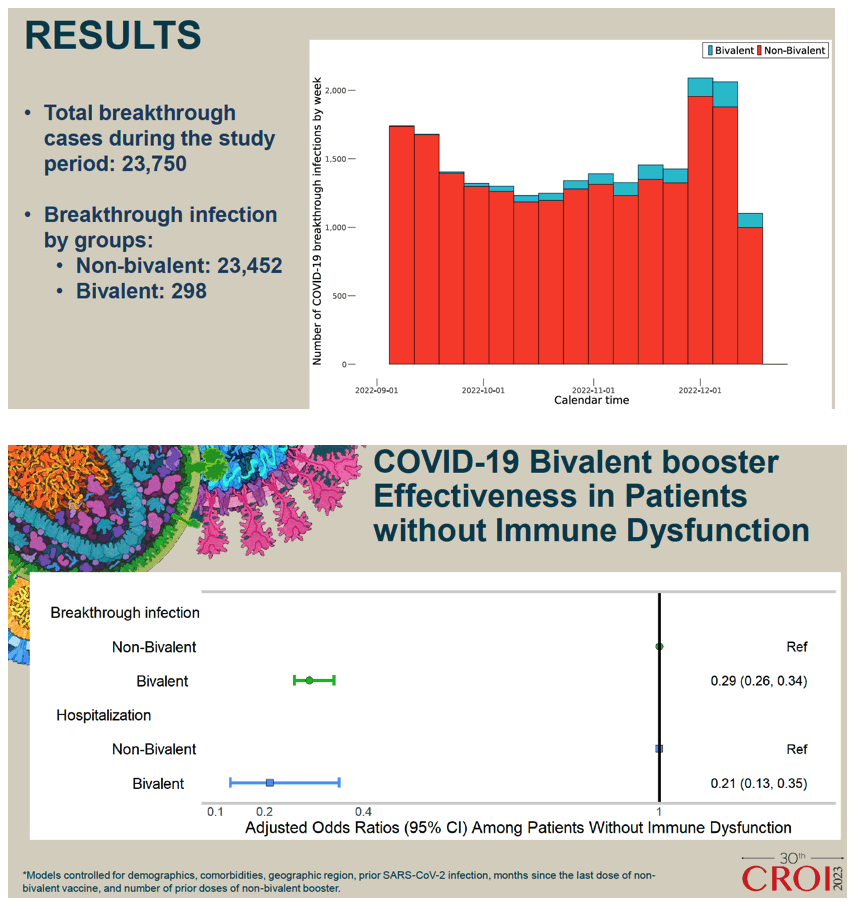
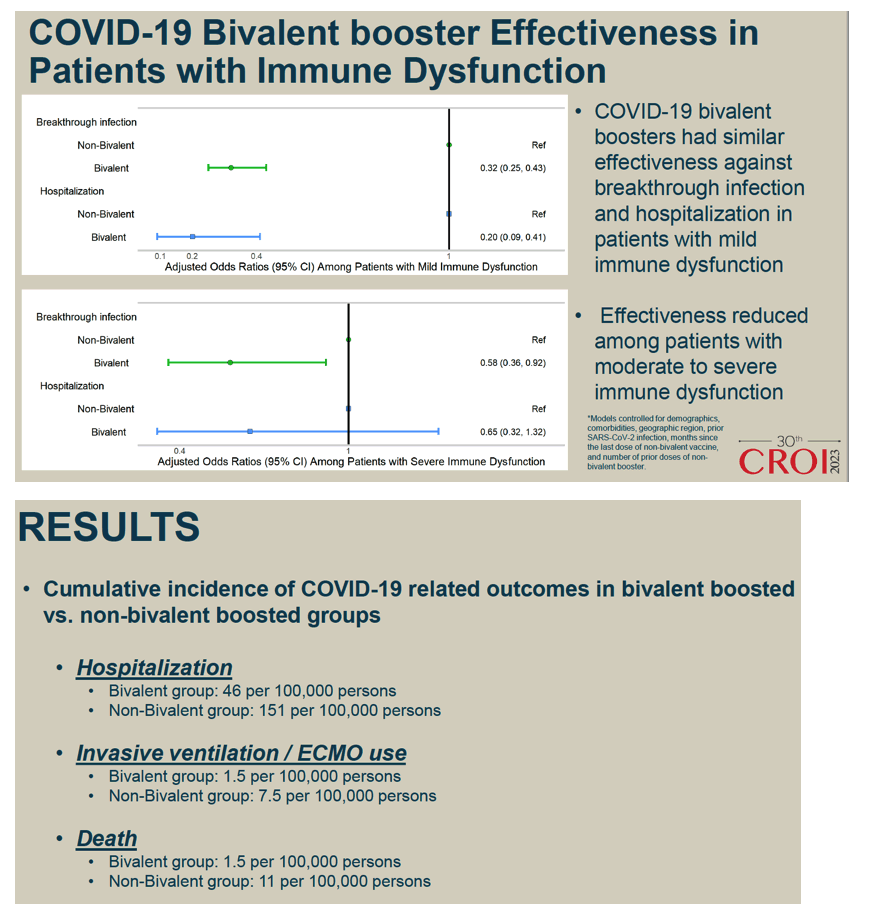
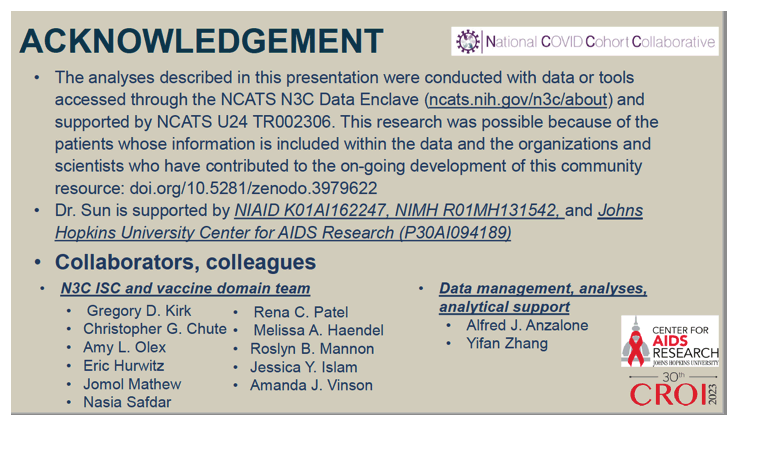
|
| |
|
 |
 |
|
|